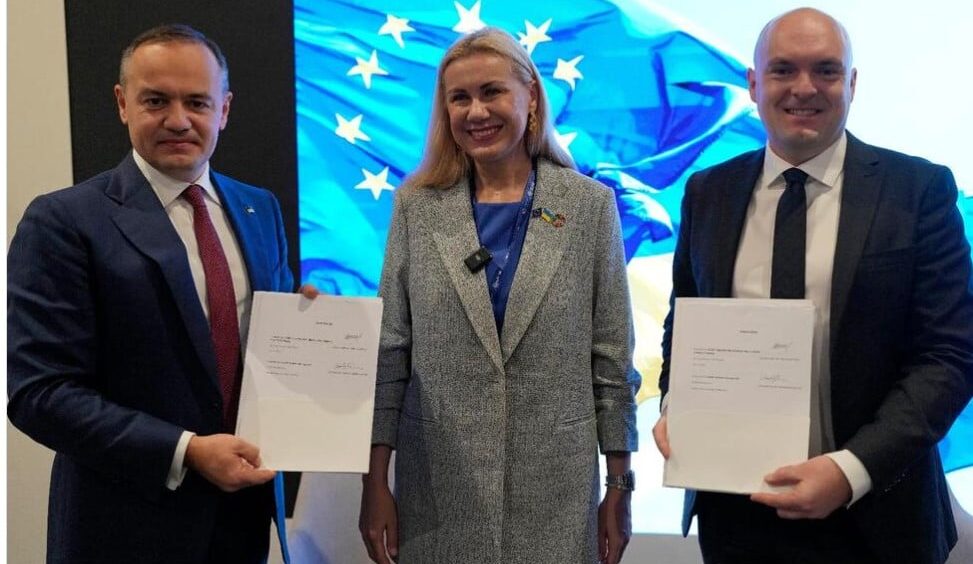COP28: Ukrainian Diplomats Navigate Dual Challenges Of Addressing Climate Change, Russia’s Invasion

Russia last winter destroyed about half of Ukraine’s electricity infrastructure, including generating plants and power lines
Russia’s war on Ukraine rages in the background while Ukrainian diplomats participate in negotiations at the United Nations COP28 climate talks, while the United Arab Emirates’ business links to Moscow have grown despite Western sanctions.
Ukrainian officials emphasised how the wind farm’s turbines would be spaced far enough apart to withstand any Russian missile assault as they revealed on Monday that Ukraine would be expanding a wind farm in the Mykolaiv region for 450 million euros (USD 489 million).
They denounced Moscow’s ongoing attacks on the nation’s energy infrastructure while snowstorms ravaged the nation. Additionally, during a gathering when protesters were prevented from mentioning Israel in their calls for change over its relentless airstrikes and ground offensive against Hamas in the Gaza Strip, an American envoy resentfully criticised Russian President Vladimir Putin.
“The war in Ukraine – Putin’s invasion – represents a fundamental challenge to the international system that the United States and our allies and partners are trying to build,” said US Assistant Secretary of State for Energy Resources Geoffrey R. Pyatt.
“Putin is dragging us back to the law of the jungle. He has to be defeated,” he added.
The war looms large over Ukraine’s pavilion at the COP28 summit. A brick roof from the war-torn Kherson region serves as a physical reminder of the collapse of the Kakhovka Dam and the rush of water from the country’s largest reservoir that washed away villages and cities in June.
The dam’s destruction led to deadly flooding, endangered crops in the world’s breadbasket, threatened drinking water supplies for thousands and unleashed an environmental catastrophe.
Russia, which had the ability, incentive and chance to breach the dam, is held accountable by Ukraine for the disaster. Although even Putin conceded that the dam’s collapse offered cover for his retreating soldiers and hampered Ukraine’s counteroffensive this summer, Russia has blamed Ukraine for the dam’s failure through a series of accusations.
At the pavilion on Monday, private Ukrainian energy producer DTEK and the Danish company Vestas inked a memorandum of agreement to extend DTEK’s wind farm project in Mykolaiv. According to DTEK CEO Maxim Timchenko, the project’s first phase cost 200 million euros (USD 217 million) to build amid the conflict, and crews had to spend around a third of their time in bomb shelters.
“They work in (body) armour and they see missiles flying above their heads,” Timchenko said.
“That is why we are proud of this achievement and it gives us more confidence to build the second phase and complete this project,” he added.
The new 450 million euros in funding comes from banks with government guarantees and war-risk insurance, Timchenko said, praising Denmark for its role in securing the project’s financing.
The energy grid expansion comes as Russia still occupies Europe’s largest atomic power plant in Ukraine, the Zaporizhzhia nuclear power plant and fighting still endanger others. At risk as the cold sets in this winter is power too.
Russia last winter destroyed about half of Ukraine’s electricity infrastructure, including generating plants and power lines. Ukraine says it has repaired that damage during the summer, but the largest-ever wave of Russian attacks using Iranian-supplied drones last month has renewed fears that its grid again will come under attack.
“Putin has made energy one of his weapons,” said Pyatt to Ukraine.
“He has done that with his drone and missile attacks on civilian energy infrastructure. He’s done that by turning off the gas pipelines to try to weaken Europe’s resolve to support the Ukrainians. So we have recognized from day one that for Vladimir Putin, energy is just about as much a part of his war strategy as are his tanks and his missiles,” he added.




























































































































































































































































































































































































































































































































































































































































































































































































































































































































































































































































































































































